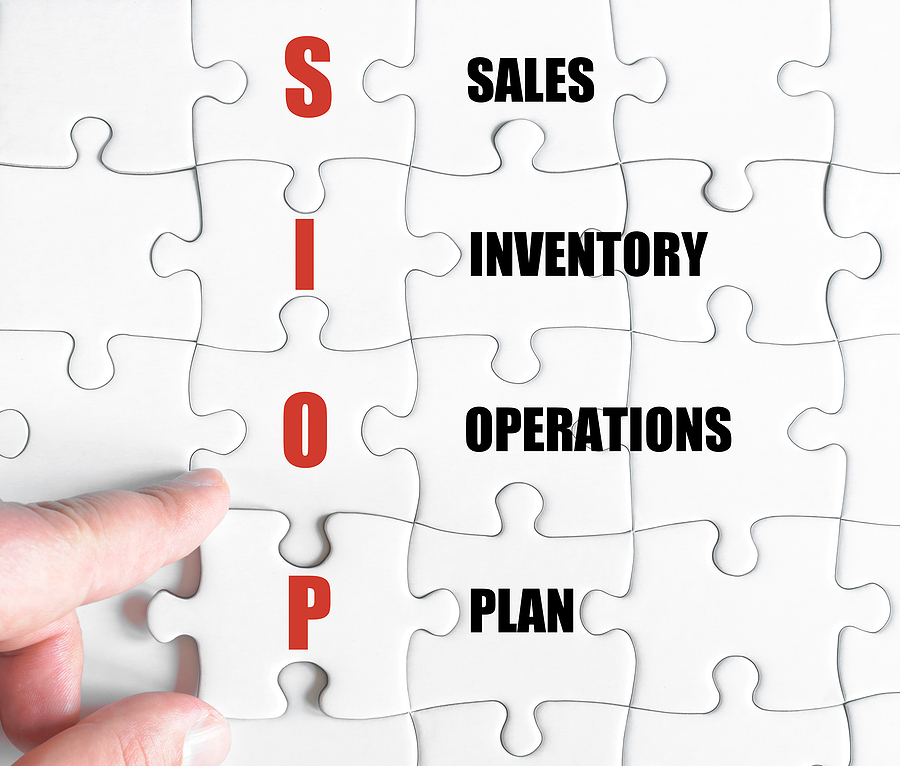
COVID has disrupted every business. Some are growing far faster than supply can keep up while others have dropped like a rocket. Still others have almost identical dollar volume yet double the number of orders at half the order size, creating significant disruption in warehousing, shipping and transportation. And still others might have less severe changes in volume yet certain customers are thriving while others are dormant creating mix disruption.
The supply side is no different. Previously reliable suppliers can be suspect at best, previously high-quality, low-cost suppliers have skyrocketing costs as airfreight is required to keep customers’ satisfied, risks have increased dramatically with the uncertainty of cash flow and long-term ‘institutions’ of the industry are disappearing overnight. With this high level of disruption across both demand and supply, misalignment has run rampant, costs are increasing and customers are frustrated.
SIOP (Sales, Inventory Operations Planning) Cuts through the Disruption
You know the story. The busier we get, the less we have time for improvement yet we spend double or triple the time to achieve the same outcome because we can’t set aside the time required to start or maintain an improved process. I’ve been there so I am familiar with the excuses! With that said, STOP and look around you. You are on a hamster wheel with no end in sight. Implementing SIOP, even if simplified to what is achievable under current conditions, cuts through the disruption to stabilize your supply chain.
What is SIOP?
Quite simply, SIOP, also known as S&OP, is about finding a way within your environment to realign demand with supply. You have to start with demand or you will forever chase your tail. To simplify the best practices across industries (aerospace and defense, building and construction products, food and beverage, healthcare products), geographies, and company sizes that apply to manufacturing, supply chain, logistics, and service organizations with supplies, you should focus on these keys:
- Proactive management of demand: Talk with customers, find out about your customers’ customers and every customer type within your channel until you get to the end customer (consumer, business using your product, patient), ask about and observe evolving customer needs, review historical trends and put a stake in the ground with a starting point forecast. Outcome: typically, 12-18 month rolling forecast
- Proactive management of internal supply: Talk with your internal teams, understand changing capacity and staffing levels (manufacturing, warehousing), realign temporary and contract assistance, understand your resiliency to changing demand (overtime, increasing staffing, efficiency improvements, maintenance and engineering support, etc.), realign with R&D/ product development requirements and realign your support resources. Outcome: typically, a capacity plan (production, storage), high-level staffing plan, and key decision plan (make vs buy, product / customer transitions, machinery and equipment plans) for at least as long as your longest lead item but typically 12-18 months.
- Proactive management of supply partners: Talk with suppliers, find out about your suppliers’ suppliers’ capabilities, their likelihood to meet schedules, ability to meet cash flow needs and risk of shutdown (whether temporary due to COVID or another disruption or permanent (going out of business)). Outcome: typically a sourcing and supply plan by key suppliers/ commodities for at least as long as your longest lead item but typically 12-18 months.
- Proactive management of your logistics network partners: Talk with transportation partners, brokers, 3PL/ 4PL partners and understand the extended supply chain, potential risks, possible options as disruptions occur, etc. Outcome: typically, a logistics network and goods movement plan for at least as long as your longest lead item but typically 12-18 months.
- Take stock of inventory: Do you have strategic stock of critical items? Items without a robust backup supplier? Items in countries of higher risk of shutdown? Are you so busy running in circles that your slow moving and obsolete is expiring under your nose? Outcome: typically an inventory investment plan for 12-18 months.
Pre-COVID, clients went through a SIOP cycle with a monthly cadence. The typical processes included:
- Demand review meeting
- Supply review meeting
- Alignment of demand and supply (not always requiring a meeting)
- Inventory review meeting (often incorporated into the supply meeting)
- Executive SIOP review meeting (in some cases, quarterly made sense)
During COVID, we have taken these same concepts and adjusted to changing conditions. No two clients are alike in what makes sense to rapidly realign demand and supply and maintain this alignment yet there is one item in common across the board:
A weekly alignment on just the critical customers, internal resources, suppliers, logistics network partners and review of inventory
Read more about SIOP and related concepts in our eBook, SIOP: Creating Predictable Revenue and EBITDA Growth. If you’d like a rapid assessment and recommendations for your situation, please contact us.


